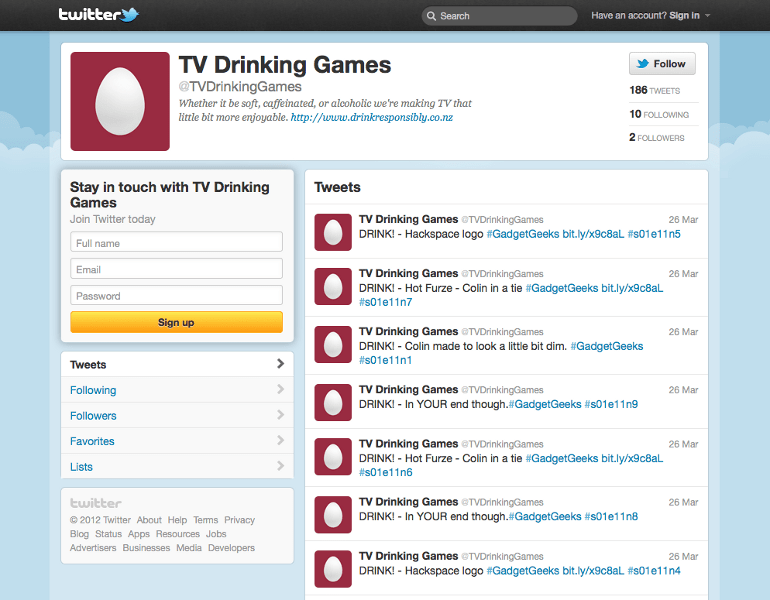@TVDrinkingGames
Back in January, Sky 1 started airing the show Gadget Geeks, which stars the London Hackspace members Charles Yarnold and Tom Scott. In order to provide support members of the Hackspace decided to watch the show together, with Tom and Charles providing live commentary of behind the scenes going ons, while simultaneously having Twitterfall projected onto a spare wall (dubbed ‘The Wall of Hate’) in order to see public feedback of the show. In addition to this it was joked that there should be a drinking game for when watching the show. That joke became a reality which I went on to use as the basis for @TVDrinkingGames.
@TVDrinkingGames is simply a Twitter account that tweets during the show telling people when they should drink, with the participants being expected to be responsible, know their limits, and not feel restricted to solely consuming alcoholic beverages (e.g. Club Mate makes a nice alternative). @TVDrinkingGames is so basic that it’s not doing any subtitle parsing or computer vision. It’s just me using a web interface to quickly send tweets when I spot a drink cue. It’s written in Python and makes use of the web framework Pylons in order to provide the user interface and the Python Twitter API in order for my code to be able to send tweets.
The web interface for sending the tweets is similarly basic. It consists of a list of each of the drink cues and a submit button. Clicking the submit button sends the unique ID for that cue to the backend which then performs a lookup to get the string to be Tweeted, appends the episode number as well as the number of occurrences of that cue for that episode. The reason for the count is that very early on I realised Twitter wouldn’t publish my tweets if the exact same content was sent in quick succession so by appending the count I can make the tweet appear to be unique.
@TVDrinkGames is currently only used for Gadget Geeks but I would like to make use of it during the Eurovision Song Contest. Possibly adding the ability for it to pick up on other people’s tweets in order to trigger cues, parsing TV subtitles for instances of commentators saying something, or even being able to detect key changes in the music.



